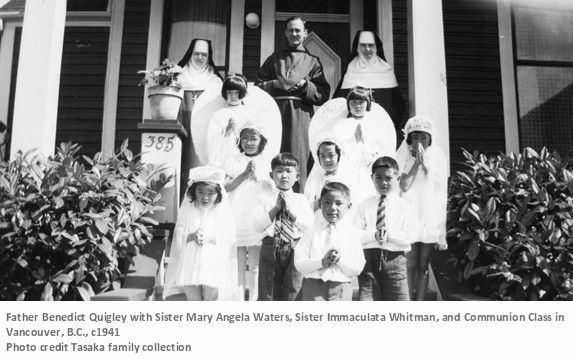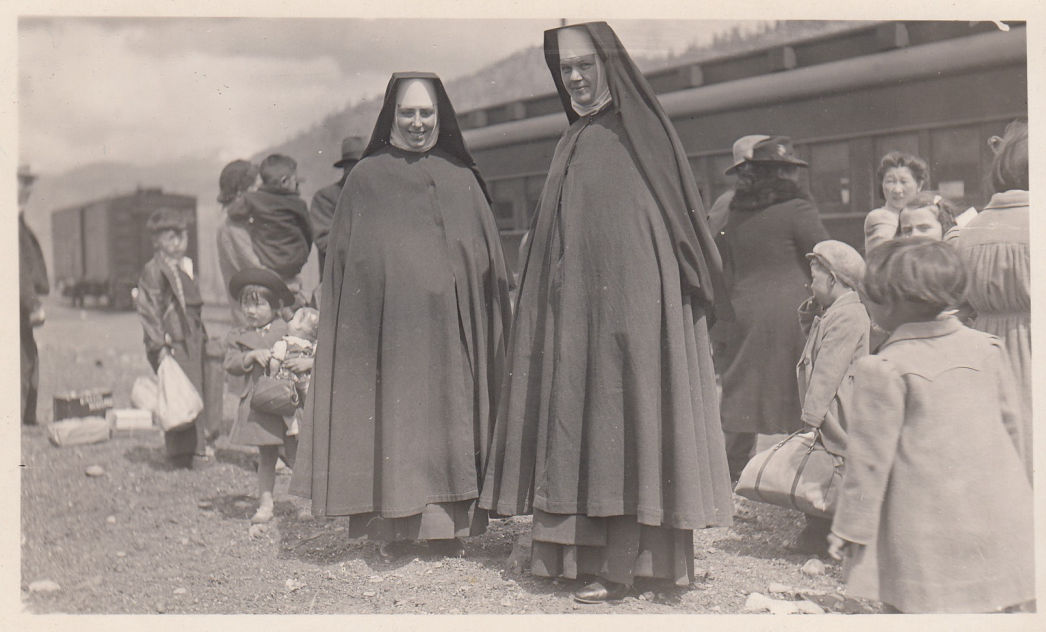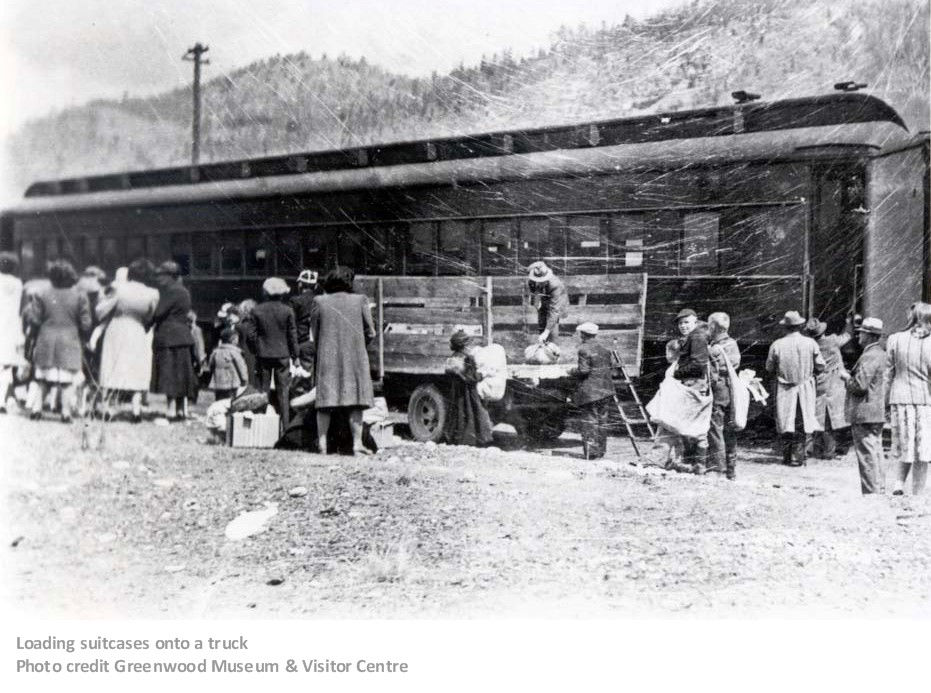In January 1942, during the initial phase of the mass evacuation of the Nikkei, families were split up as Japanese nationals and physically fit men aged 18-45 were sent to road camps in B.C., Alberta, and Ontario under the order of the B.C. Security Commission (BCSC). The following month the federal government ordered the removal of all Nikkei from the protected zone, and it was not until July 1, 1942 that the BCSC agreed to reunite the men with their families.
Greenwood became the first internment site of Japanese Canadians, and many of the internees were from Steveston, the second largest community of Nikkei in Canada whose population reached an estimated 1,199 males and 952 females by 1940. As several fishing families wished to remain together, they approached the Franciscan Sisters of the Atonement from the Catholic Mission who had played an active role in their community including the operation of the Japanese daycare and kindergarten facility in Steveston since 1931. Of the approximately 1,200 Nikkei sent to Greenwood, the Catholic Church organized the relocation of approximately 500 individuals or 100 families to this small community in the interior of B.C. Besides Steveston, the internees came from Vancouver and other parts of B.C. including Vancouver Island.



